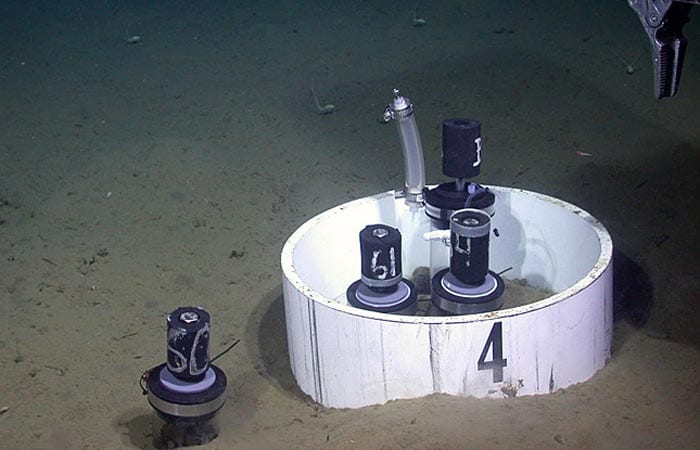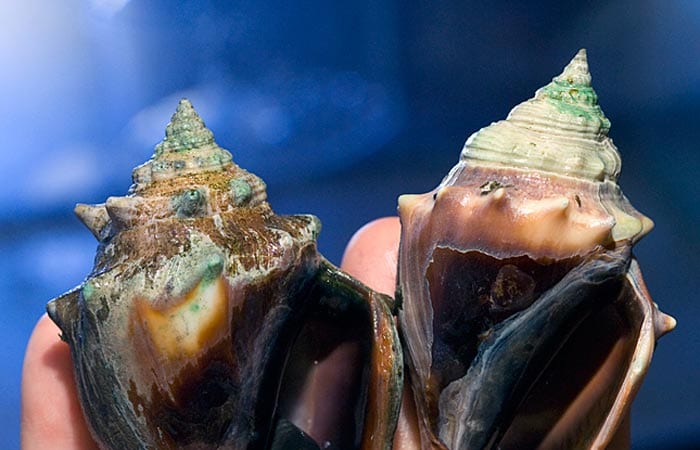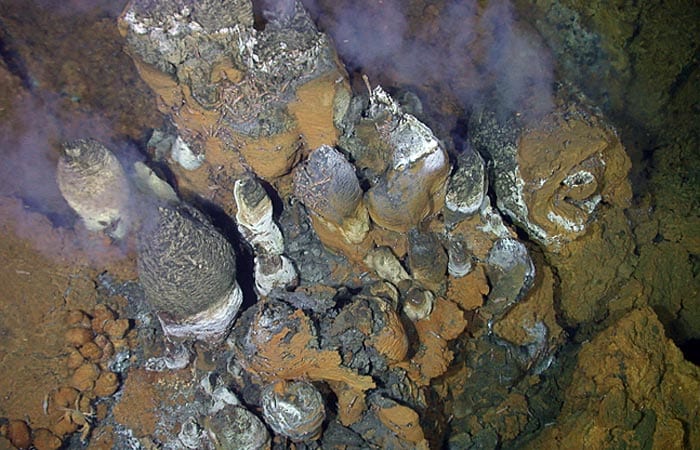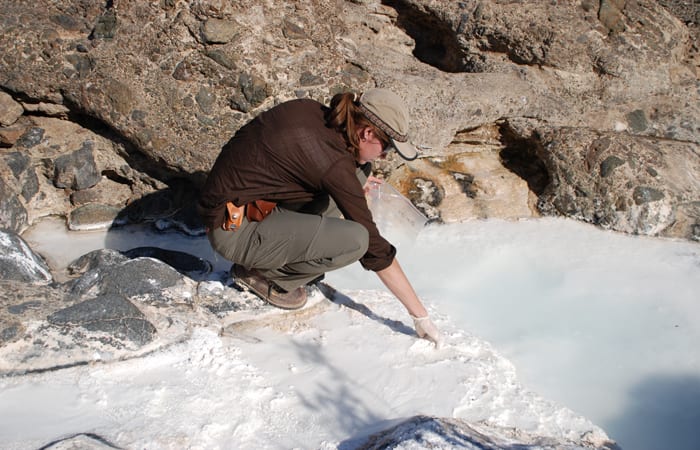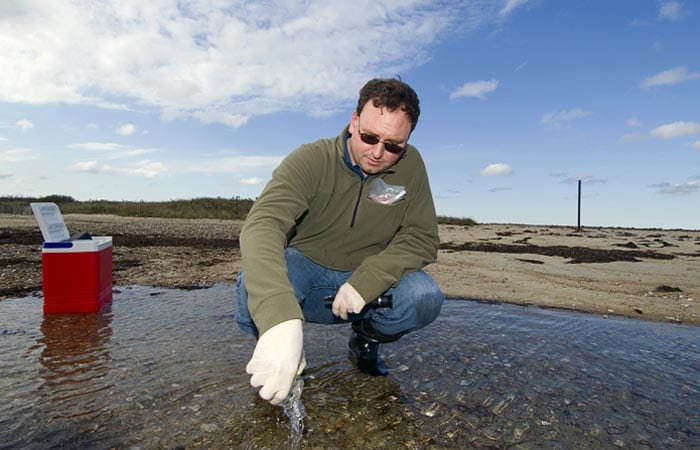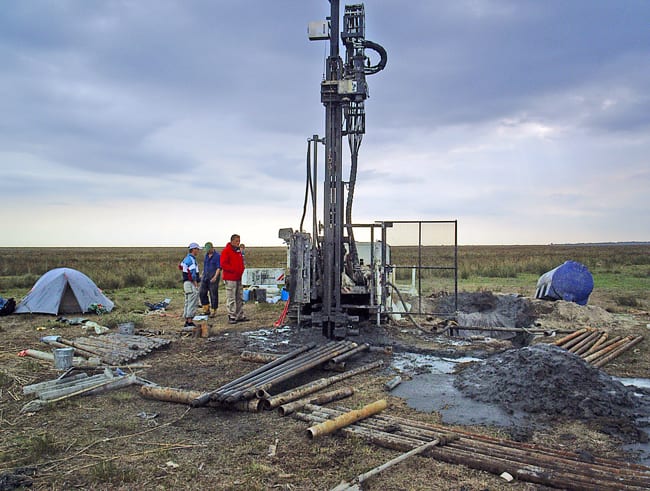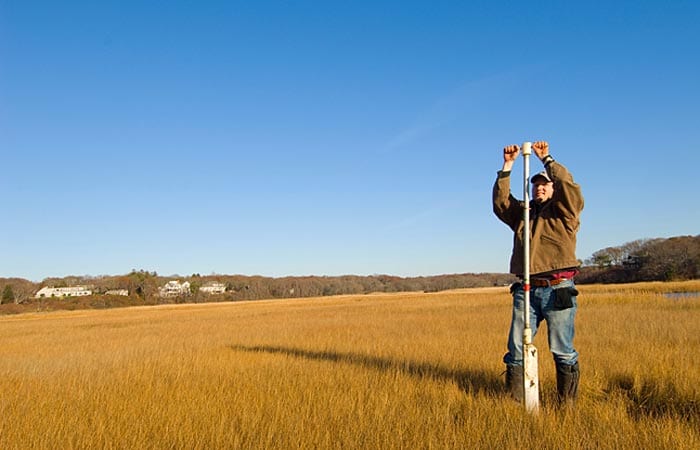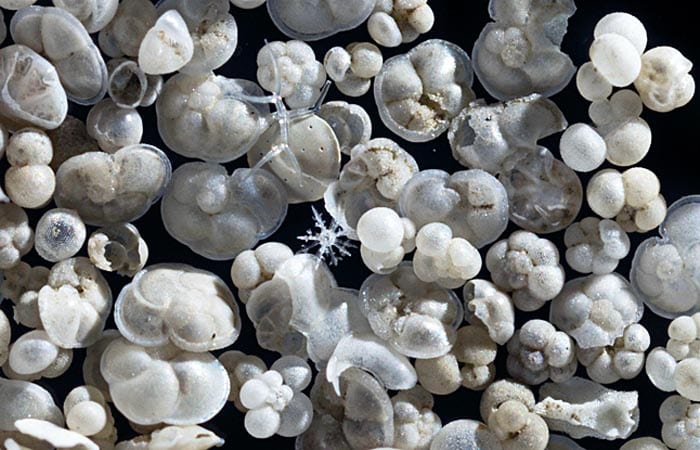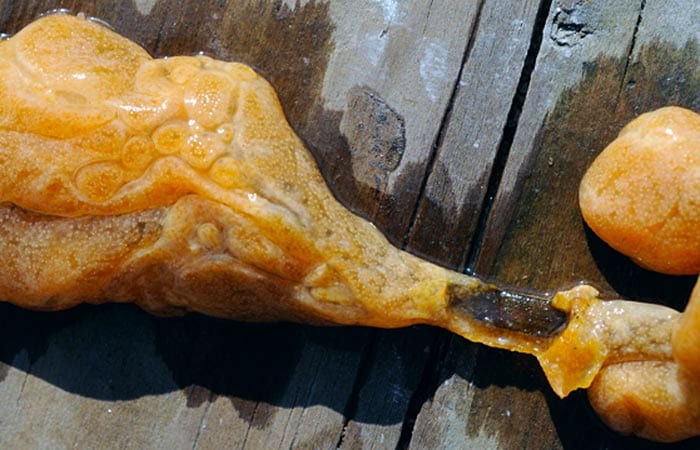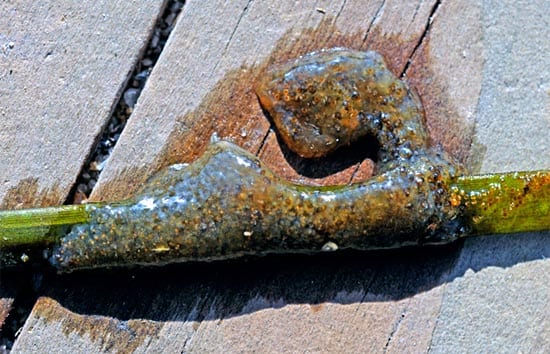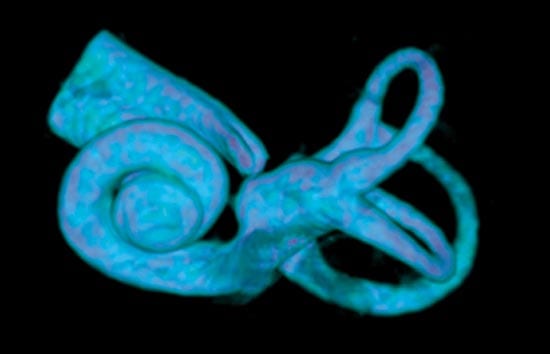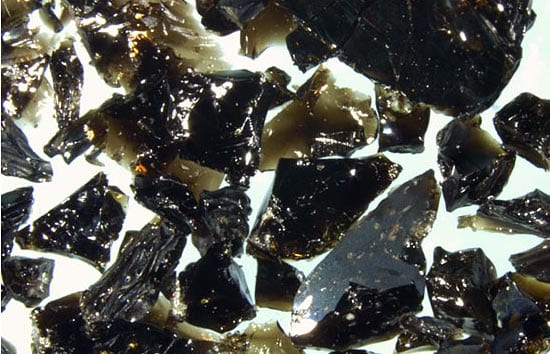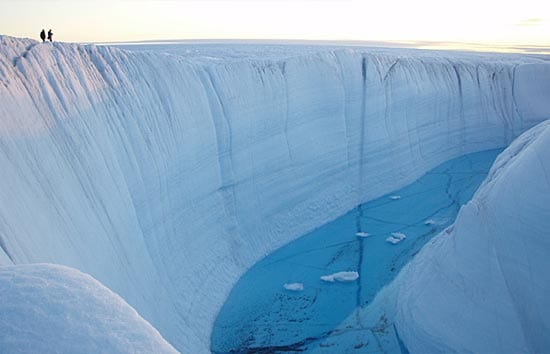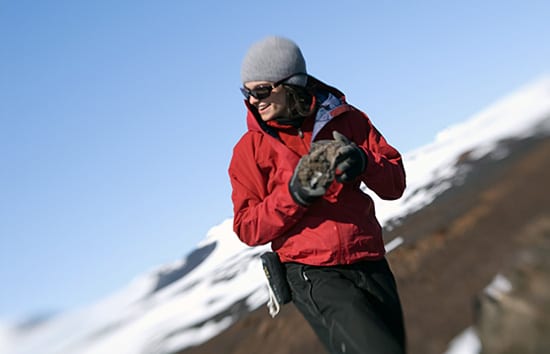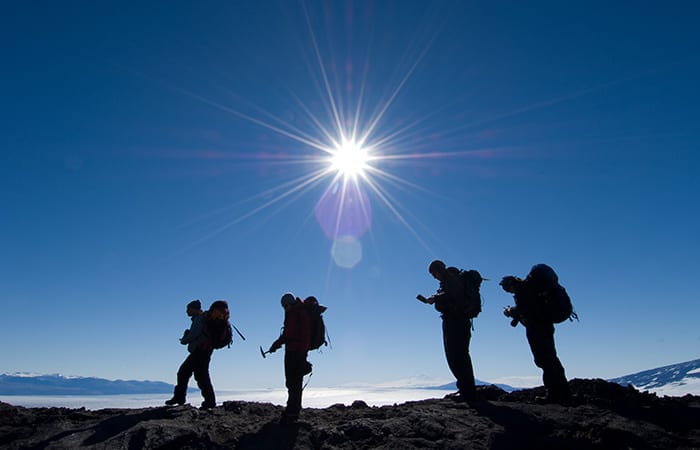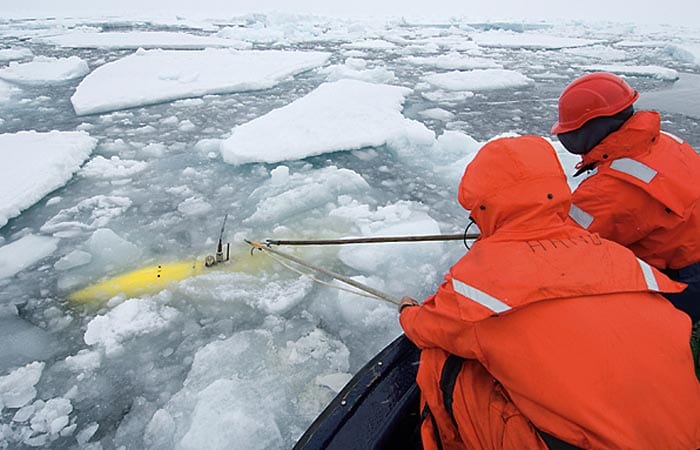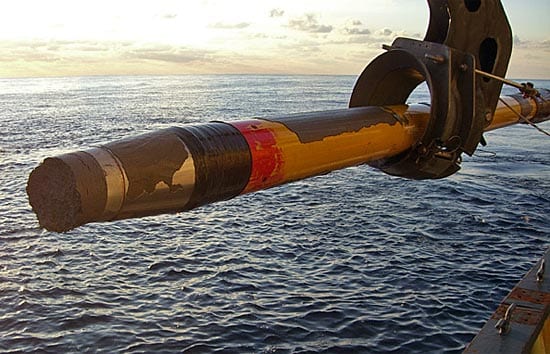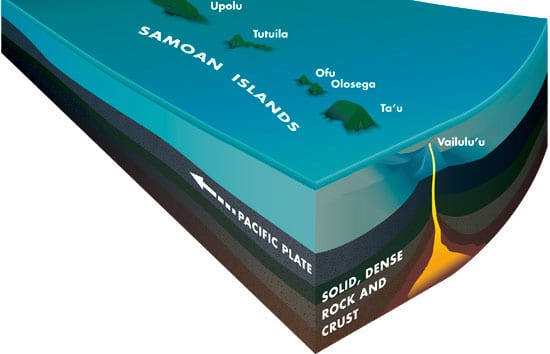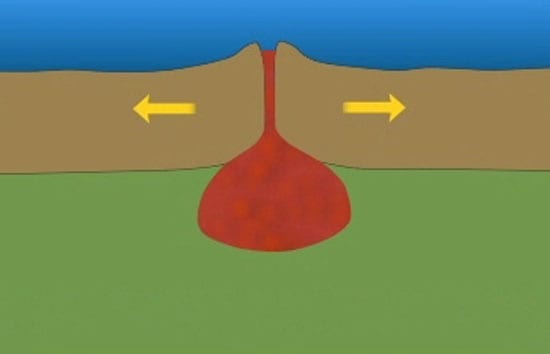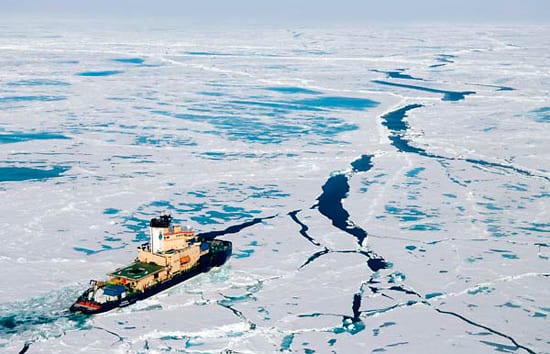Geology & Geophysics
Should We Inject Carbon Dioxide into the Deep Ocean?
One proposed strategy to offset rising levels of greenhouse gases in our atmosphere is to capture carbon dioxide (CO2) emissions from fossil-fuel-burning power plants and pump them into the ocean…
Read MoreOcean Acidification: A Risky Shell Game
A new study has yielded surprising findings about how the shells of marine organisms might stand up to an increasingly acidic ocean in the future. Under very high experimental CO2…
Read MoreThe Promise and Perils of Seafloor Mining
A year ago, the Canadian mining company Nautilus Minerals was poised to launch a new industry: mining the deep ocean floor. All Nautilus had to do was finish building special…
Read MoreTurning Carbon Dioxide Gas into Rock
The Hunt for Microbial ‘Trojan Horses’
In summer, Wood Neck Beach in Woods Hole, Mass., teems with tourists, but only a few seagulls kept Matt First company as he walked through the brown-gold marsh grass last…
Read MoreNoah’s Not-so-big Flood
A long time ago, whether your time frame is biblical or geological, the Black Sea was a large freshwater Black “Lake.” It was cut off from the Mediterranean Sea by…
Read MoreHurricane Hunter
Soon after they married, Jon Woodruff asked his new wife Akiko Okusu if she’d like to take a trip to her native Japan. Not for a belated honeymoon, but to help…
Read MoreA Tale of Two Oceans, and the Monsoons
Every summer, the continent of Asia takes a big breath. This inhalation pulls moisture-laden air from the Indian Ocean over India and Southeast Asia, causing torrential rains known as the…
Read MoreInvasion of the ‘Alien Vomit’?
Are Sea Squirts Crowding Out Scallops?
Over the last 10 years, Mary Carman has documented how slimy sea squirts have invaded coastal New England, multiplying on rocks, docks, boat bottoms, moorings, and other hard surfaces. Their…
Read MoreThe Spiral Secret to Mammal Hearing
The spiral secrets of mammals? hearing abilities Whispering galleries are curious features of circular buildings. As whispers travel along the buildings’ curved walls, they remain loud enough to be heard…
Read MoreDeeply Submerged Volcanoes Blow Their Tops
A research team led by Woods Hole Oceanographic Institution (WHOI) has uncovered evidence of explosive volcanic eruptions on the Arctic Ocean seafloor almost 2.5 miles deep. Scientists did not think…
Read MoreCrack! A Lake Atop Greenland Disappears
In late July 2006, a 2.2-square-mile lake atop the Greenland Ice Sheet sprung a leak. Like a draining bathtub, the entire lake emptied from the bottom, sending water through a…
Read MoreAntarctic Andrea
The sound of boots crunching on brick-red gravel filled the thin Antarctic air. Three scientists—geologists from Woods Hole Oceanographic Institution (WHOI)—had been climbing for 30 minutes, staring at their feet…
Read MoreEarth, Wind, and Fire in Antarctica
From a windy, isolated camp in southern Victoria Land, Antarctica, three scientists from Woods Hole Oceanographic Institution explore how the waterless, lifeless, volcanic terrain formed and evolved. Read the story…
Read MoreArctic Voyage Tests New Robots for Ice-covered Oceans
In the summer of 2007, an international team led by scientists at Woods Hole Oceanographic Institution sailed to the Arctic Ocean aboard the Swedish icebreaker Oden. Their missions: to test…
Read MoreNew System to Take Long Seafloor Cores Is Ready to Go
Over five years, engineers had designed, built, and tested components for a new, one-of-a-kind system to extend the length of sediment samples cored from the sea floor. In September, they…
Read MoreEarth’s Moving Crust May Occasionally Stop
The motion, formation, and recycling of Earth?s crust?commonly known as the theory of plate tectonics?have long been thought to be continuous processes. But new research by geophysicists suggests that plate tectonic motions have occasionally stopped in Earth?s geologic history, and may do so again.
Read MorePlumbing the Plume That Created Samoa
Matthew Jackson began his journey to the center of the Earth on lonely gravel roads in Montana. Uninterested in motorcycles and horses, and miles from neighbors and friends, Jackson roamed…
Read MoreNew Wrinkles in the Fabric of the Seafloor
Deborah Smith first heard the strange rumbling from the seafloor in 2001 and was eager to get to the bottom of it. The ocean commotion was detected by underwater hydrophones…
Read MoreSummer Under Arctic Ice
This month, an international team of scientists and engineers are exploring the seafloor of the Arctic Ocean while cruising aboard the Swedish icebreaker Oden. The science team is sending three…
Read MoreFragmented Structure of Seafloor Faults May Dampen Effects of Earthquakes
Many earthquakes in the deep ocean are much lower in magnitude than expected. Geophysicists from the Woods Hole Oceanographic Institution (WHOI) have found new evidence that the fragmented structure of seafloor faults and previously unrecognized volcanism may be dampening the effects of these quakes.
Read MoreExplorers to Use New Robotic Vehicles to Hunt for Life and Hydrothermal Vents on Arctic Seafloor
Researchers will probe the Gakkel Ridge during expedition that begins on July 1.
Read MoreWHOI Geologists Compile Longest Ever Record of Atlantic Hurricane Strikes
The frequency of intense hurricanes in the Atlantic Ocean appears to be closely connected to long-term trends in the El Ni?o/Southern Oscillation and the African monsoon, according to new research from the Woods Hole Oceanographic Institution (WHOI). Geologists Jeff Donnelly and Jonathan Woodruff made that discovery while assembling the longest-ever record of hurricane strikes in the Atlantic basin.
Read More
